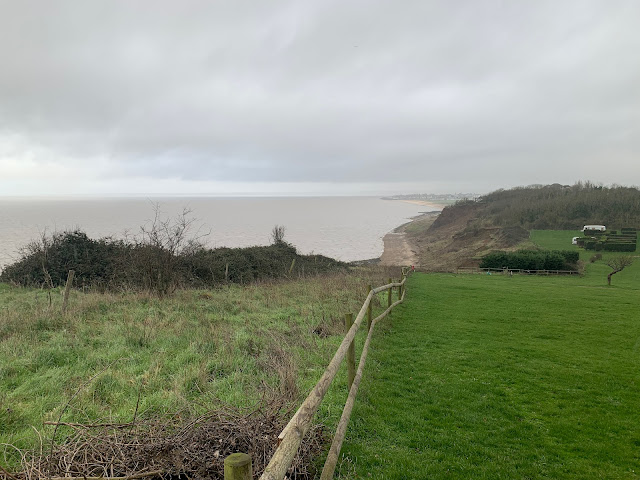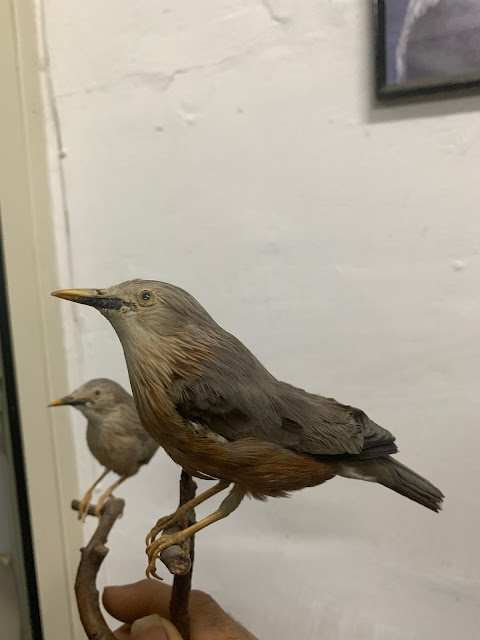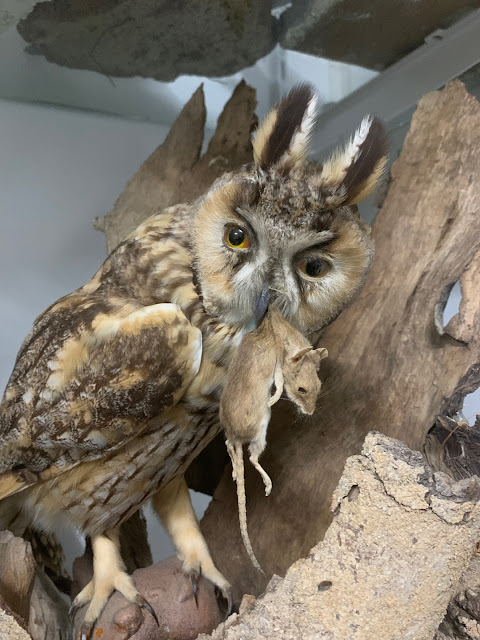View over the North of the main island over towards Comino and Gozo
Unfortunately my Malta trip has come to an end. I really need to go back in the Spring sometime to target Algerian Whipsnake (and also still need Cat Snake and Leopard Snake for the WP, although hopefully I will get them in Bulgaria). I've seen Maltese Wall Lizard (although not all five races, four of which are islet races from Filfla, Fungus Rock, Comino and St Paul's Island), Turkish and Moorish Gecko, Mediterranean Chameleon and also Western Whipsnake on previous trips there as a kid. There are also 24 endemic plant species and Wikipedia claims there are 78 endemic pan-species endemics
here. So it will definitely make a good spring trip. I've asked our project manager there to try and get the next stage finished by next April so that I can time the next stage of meetings etc with a bit of naturalising.
All looking good on the small development project there, which should help with the current 'investment fund raiser' we are doing. Seems like all the stops have been pulled on that now and just need to wait for funds to build up. Not a great time to be taking too many financial risks what with all the strikes, the cost crisis, inflation etc and the whole thing feels to me like we are all heading towards an economic hurricane. What with a Global Oligarch Dynasty rep (Rishi Sunak) now at the helm of the UK economy presumably he has been put in that position to push through more of the global fourth industrial revolution (digital currencies, more digital platforms, AI advancement, digital based healthcare reforms and more experiments in mRNA treatments, social credit systems, carbon credits, biodiversity credits etc etc). Post Brexit Britain is the ideal place to experiment with this kind of thing as without the regulatory backing of a superstate, the whole of the UK population are now lab rats.
I've written on this blog about the urgency, IMO, for regular people to build personal resilience in the face of this system change/ upgrade including becoming more self sufficient (growing own food, off grid capabilities etc), acquiring land and forming survival networks (local trade networks etc) and from a naturalist's perspective to try and 'ark-up' i.e. protecting as much of your local and personal biodiversity as possible. A system change/revolution of this scale will be extremely costly in terms of human wellbeing and environmental damage. However it's a price we have to pay to evolve to the next level. I also hope that this blog is a day to day account on the implementation of that 'survival strategy' that anyone with a particular interest in nature and birding can apply. From being based in a working class community in South London to being based in millionaire row in Buckinghamshire we've been demonstrating how resilience and people power nature conservation can be built in any environment using strategies ranging from local community building to individualistic approaches. Will keep all that up too as long as we can through the changes ahead.
The biodiversity moneyless economy- recording bird and moths etc data is one of the best forms of resilience (a free reward based system) and I imagine that once the initial destructive and shock waves pass through the UK, the re-construction of our society will be along more eco-social lines and the Naturalist citizen science community will be vastly expanded. In the Fourth Industrial Revolution World (where ecology and climate change considerations are also incorporated into the DNA of the revolution) we will need millions of citizen scientists in the UK alone to record and monitor and feed into global systems like Ebird (and every other biodiveristy group which will be monitored on global digital platforms in the future) which will inform World Government decisions in global ecosystem redevelopment.
Ironically as it looks like the UK will be the first industrialised nation to be forced through these changes, to me it seems more likely that we won't be re-joining Europe in the future and compromise our sovereignty to Brussels but it's more likely 'we '(i.e our masters, UK based oligarchs and the politicians they pay for policy) will be leading the charge on the rapid assembly of a World Government where we are more likely to compromise our traditional sovereignty- be handy if they build the world government hub in London though- Tony Blair would love that I presume) . Anyway before any of this stuff can be forced through, first they need to crash the current system to justify the emergency measures and controls (these things need to be engineered so that they appear to happen suddenly) so I really don't think any of those nurses, teachers, postal workers and other public workers will be getting any meaningful pay rises, their obsolescence to some degree is on the table and most of the work that they do will undergo an AI, machine learning, remote working, de-centralised, app based systems digital intensification which eventually will all feed into world government central computer systems. Postal workers will be replaced with drones, GPs by apps that monitor our health and feed it into algorithms and private health care providers, NHS nurses by private nurses, AI and robots, teachers will be replaced with AI etc etc.
What this means for nature conservation and biodiversity is fascinating. We've already seen the private nature reserve revolution beginning, digital recording platforms, carbon and biodiversity credits appearing and natural capital accounting and there are already the first signs of the corpocracy beginning to adapt their bottom lines to reporting on carbon emissions and biodiversity impacts so the beginning of a multi-index system is well underway. Fortunately the inefficient charity model is being complimented by more market based solutions and also it looks like the whole CIEEM and LINK crowd ( following Richard Benwell on Twitter getting stitched and un-stitched by the Tories as they dangle these ELMS, Nature Recovery Networks and Sustainable Farming Incentives is entertaining btw- he seems remarkably head strong through it all) that have been making too much of their money on taking their pounds of flesh from overdevelopment will presumably also need to up their game with more interest from the corpocracy now to actually do more than just greenwash and tick boxes. Once economic and ecological algorithms start being formed these companies will need to show net biodiversity gain across their managed territories. Hopefully the Beddington Farmlands case study that we are working on will provide more insights into those transformations which is a wasp nest of dodgy CIEEM ecologists, dodgy local politicians and community poodles and underperforming council biodiversity officers and un-tapped community group potential and under-utilised citizen science technological potential .
The old world is dying fast and there are immense opportunities ahead. There are also immense risks and dangers and both malevolent and benevolent forces are at a work at every scale from your village to the entire global scale. There is an entire power and wealth structure that needs to be reassembled and those who are currently clutching onto old models of power and wealth will not let go easily and they will drag millions of people down with them.
Ok so off the tangent and back onto Malta, so hopefully the Malta small development project (building a new flat on top of the one we have) will provide affordable rental accommodation (we always aim to rent at 30% below highest rates) and help us spread risk across Euro/Pound currencies and add to our portfolio which includes Bulgaria too (land purchases) to spread risk across three different countries (in the unlikely but possible event of needing to escape the UK if these new systems initially appear in Authoritarian and Euthanasian form). Back in the UK the search remains on to buy a small farm where we can bunker in and then basically doing our best to survive the coming few years. I'm still experimenting in green transition stocks and shares and investing in carbon markets and crypto currency/block chains too. Hopefully the strategy of land and property investment, green space management service provider, emerging green markets and new financial system investments coupled with a home based self sufficiency strategy will not just put us in a 'good-chance-of-survival' category but also form some models of how individual and small group eco-socialism/ natural capitalism is evolving and can play a complimentary role in solving the ecological emergency along with the academic, charity and corporate/private wealth sectors. In fact in the fourth industrial revolution the role of smaller players (through digital democratisation) is likely to become a very important area of growth in all sectors including nature conservation.
I don't think anyone with even the slightest awareness of what is going on around them is in any doubt that we are on the cusp of radical and exponential change and as always Little Oak Group attempts to show how individuals and tiny groups can keep going/growing (barely) in the midst of global cataclysm without compromising ours souls and values too much (although there's been a bit more of that lately too in these extremely testing times).























































